Interviews, Surf culture, TravelThe Rising Sun: Surf Tourism Development in Miyazaki, Japan

Japan’s idiosyncratic personality is often associated more with sushi or samurai – not swells. Even so, over the past few decades the country has gradually internationalised its wave potential while also tacking together a peculiar surf culture in a Japanese sort of way. Now, with surfing scheduled to premier as an alternative sport in the Tokyo 2020 Olympics, the role of Japan’s surf scene ought to be reconsidered.
Dr. Adam Doering, an Associate Professor at the Centre for Tourism Research in Japan’s Wakayama University has been drawn by this often neglected influence Japanese surf cultures have had on the global surf culture. However, as a hockey player from the Canadian Prairies, Dr. Doering’s path to publishing his latest paper about the ‘Genealogy of Surf Tourism Development in Miyazaki, Japan’ was a long one.
His first contact with surfing was the result of a longing to be by the sea and the 1990s global surf industry boom: Pictures of Todos Santos covering the walls of his cold basement bedroom called him to California, while a copy of The Endless Summer for his birthday brought him closer to his dream. He never made it to California but did get closer to the ocean and surfing while completing a PhD in Tourism at the University of Otago, New Zealand. During this time, he met his partner – who happened to be from Japan’s surfing “Mecca”, Miyazaki – and spent nearly a decade living between Dunedin and Miyazaki. In 2016, he finally settled in Wakayama and has been conducting research focused on the relationship between surfing and tourism development, surfing mobilities and cultural change, and contaminated coastal ecologies, particularly in Miyazaki, Wakayama, and post-disaster Fukushima.
In the following paragraphs Dr. Doering takes a look at the metamorphosis of Japan’s surf culture and surf tourism, namely in Miyazaki, leading up to the 2020 Tokyo Olympic Games.
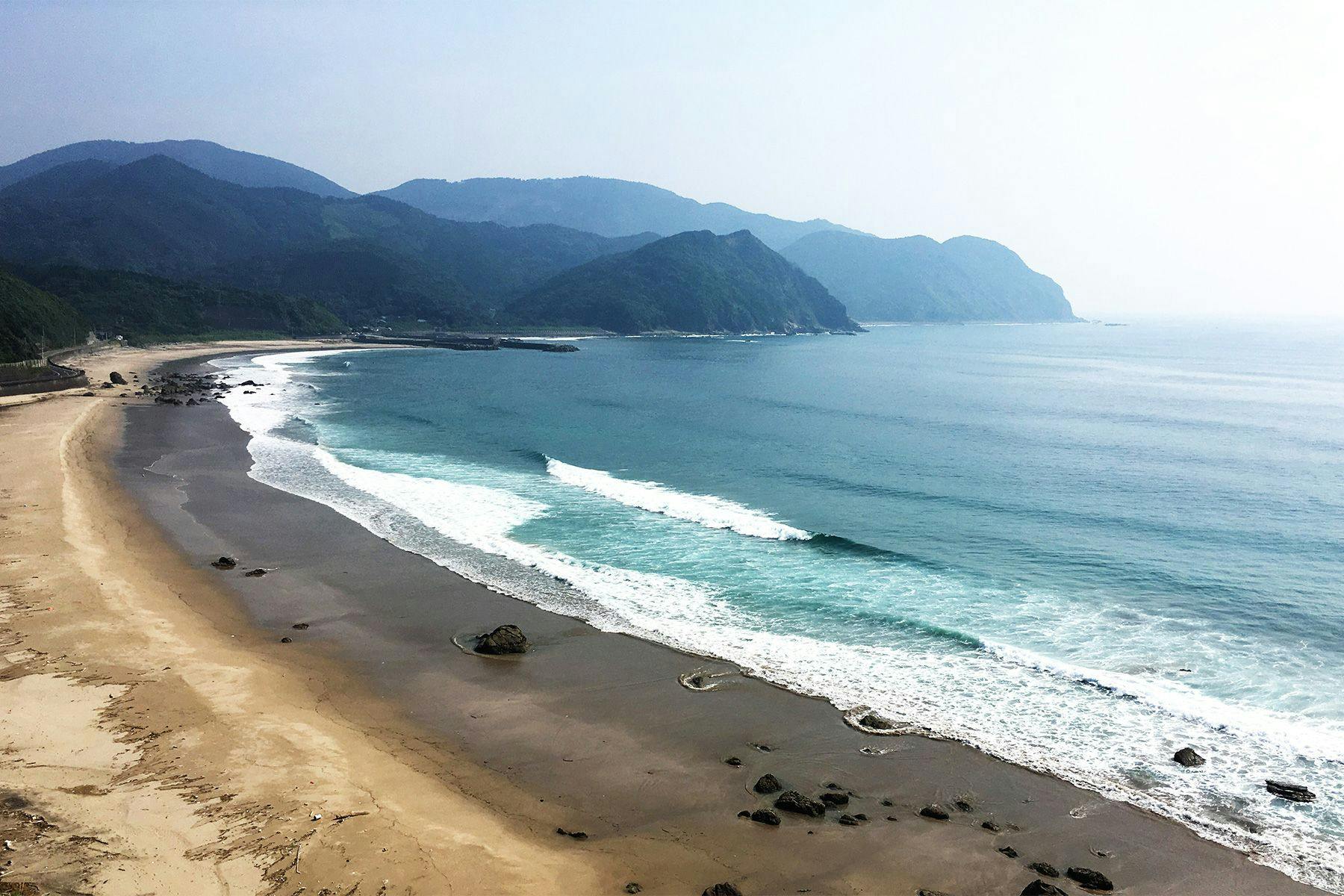
From XIX-Century Bellyboards, Through American Soldiers’ Fiberglass Longboards, to Japanese Pop Culture.
“Japan’s traditional wave riding culture dates back to the Edo period (1603-1868). Surf historian Nobuhito Ohkawa locates the earliest written record of wave riding in 1821 when Haiku poet Dokurakuan Kanri described a beach scene in Yamagata Prefecture where a group of children were skimming along the waves on itago. Itago are small wooden ‘belly boards’ shaped out of the removable floor planks found on traditional Japanese-style wooden boats. The diffusion of modern surfing then came in two great waves. The first wave beginning in the 1950s when the first-generation surfers became exposed to surf imagery through the Western cultural media, The National Geographic and Life Magazine. By the early1960s an increasing number of American soldiers based out of the Yokosuka naval base, located just 65 kilometres south of Tokyo, started bring their fiberglass longboards to surf around Sh?nan and Chiba, which is where the first generation of local surfers first saw the sport and began experimenting with shaping their own boards and, eventually, riding them. The second wave that brought surfing into mainstream Japanese pop culture peaked between 1979 and 1983 amidst a steadily rising economy that began encouraging leisure as an important part of the nation’s economic development. Surfing become normalised and fully incorporated into Japanese mainstream society.
This is how the story is commonly told but it is important to note that the emergence and dissemination of Japanese surfing was not linear. Surfing emerged simultaneously in different areas in the early years. Many of these stories are yet to be told. Furthermore, depending on how one defines what or who is “Japanese” (thinking of Kanoa Igarashi here), we could even point to author and surf historian John Clark’s work that describes the experiences of second-generation Nisei Japanese surfers in Hawai’i as early as the 1920s. There may in fact be multiple pathways and influences that brought surfing to Japan that require further attention.”
The Genealogy of a Surf Town – With a Touch of Curren.
“Miyazaki has a rich surfing history, but today’s surf aesthetic began with the early coastline development between 1930-1950 that sought to attract visitors by reconstructing the Nichinan coastal road into a “moving picture frame” of a southern tropical paradise. This was achieved by planting rows of Phoenix Palm (Phoenix canariensis) trees across 100 km stretch of road called the Nichinan Coastline Road. The presence of palm trees established a southern tropical aesthetic. One would be hard pressed to find a tourism promotion of Miyazaki or tourist Instagram post without one of these palm trees in it. These early efforts marked the beginnings of a seascape aesthetic that dominates representations of surfing in Miyazaki today.
In the 1960s and 70s, surfing silently started to emerge against the background of Miyazaki’s honeymoon boom. A small group of first generation Miyazaki surfers would eventually join the Nippon Surfing Association (NSA) in the early 1970’s. At the same time, however, the honeymoon boom began to reimagine the beach, especially Aoshima, as a leisure and resort space complete with “bikini buses” to get you to and from the city. The honeymoon boom came to an abrupt halt in the late 1970s when travel to the real Hawai’i became more affordable and appealing for the emerging middle classes. This turned many of the coastline resorts, beachside businesses and tourist spots into near ghost towns leaving the government to consider the best way to distribute the economic benefits of urban areas more equally amongst the peripheral regions of Japan. In 1987 the “Resort Law” was introduced by the national government to revitalize rural economies like Miyazaki. Each prefecture was asked to design a large scale resort based on its local character, Miyazaki chose to celebrate its surfing and southern tropical imagery by constructing the world’s largest Polynesian-styled indoor wave pool, the Seagaia Ocean Dome.
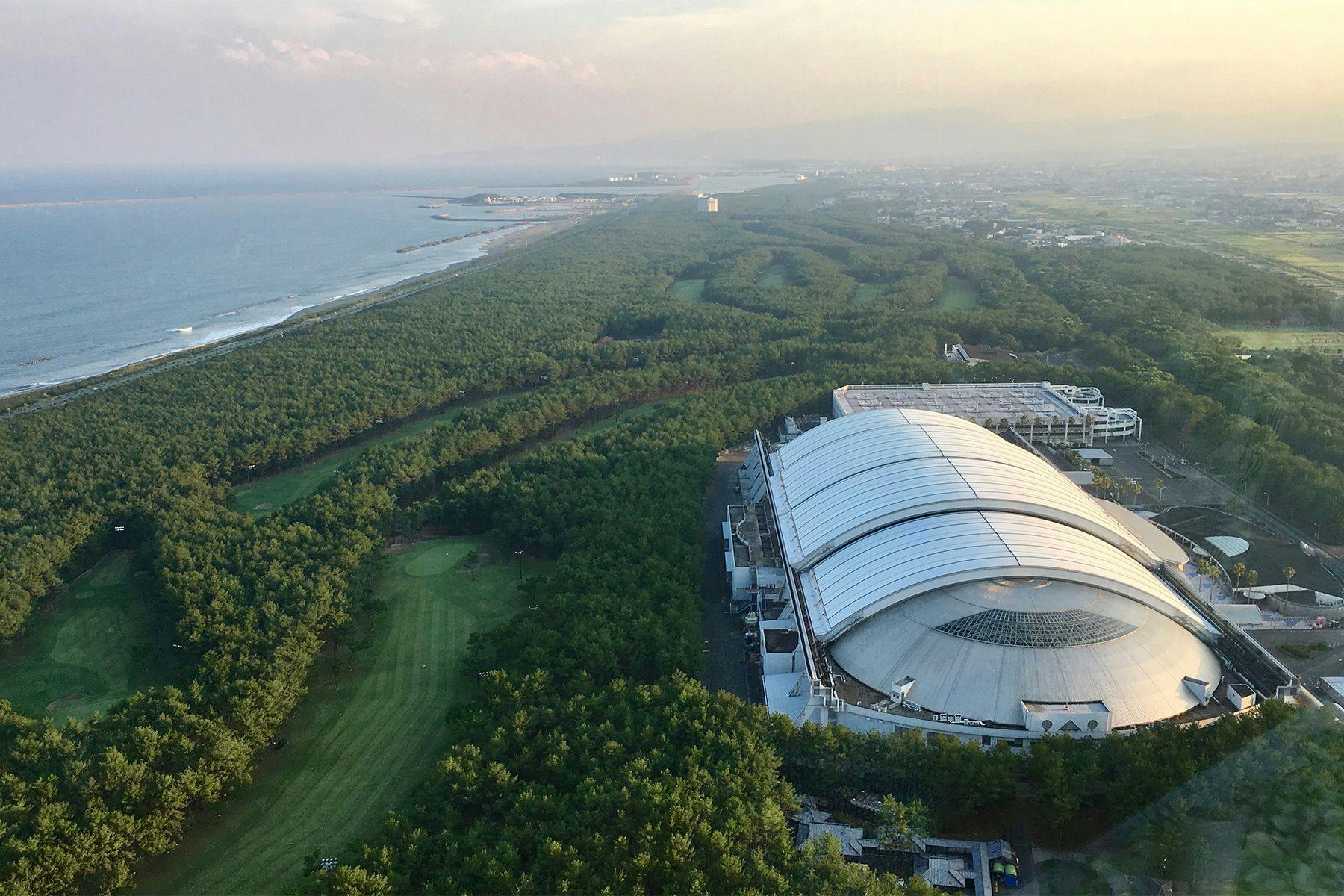
The ‘Ocean Dome’ marked Miyazaki’s first attempt at intentional surf tourism development. This was supplemented by increased efforts by the government to tap into surf capital and in April 1990, Miyazaki became the first Asian nation to host the World Amateur Surfing Championships. Moreover, between 1991 until 1993, Miyazaki Prefecture would also host the ‘Miyazaki Pro’ as part of the Association of Surfing Professionals (ASP) World Tour This brought the world’s best surfers to Miyazaki. However, the biggest legacy to emerge from these events occurred outside of the official competitions. In October 1991, Typhoon Orchid reached land on Day 4 and 5 of the Miyazaki Pro. Typhoon Orchid produced up to 15 meter waves and with the world’s best surfers in town, a group headed south to explore reef breaks down the Nichinan Coastline road. It was then that professional surfer Tom Curren paddled out into a large typhoon swell breaking over the appropriately named ‘Devil’s Washboard’. What was referred to at the time as ‘the greatest waves in the history of surfing in Japan’ would be documented for the first time in the 1992 edition of Surf’n Life. Written alongside the images and names of the foreign surfers was the proud tag line ‘Japan Made’, leaving a lasting legacy within the Miyazaki surf culture and developing a sense of pride and possibility that Japanese surfing is more than just wave pools and surf cultural industry. These waves showed the world and domestic surfers that Japan’s surf is world class.
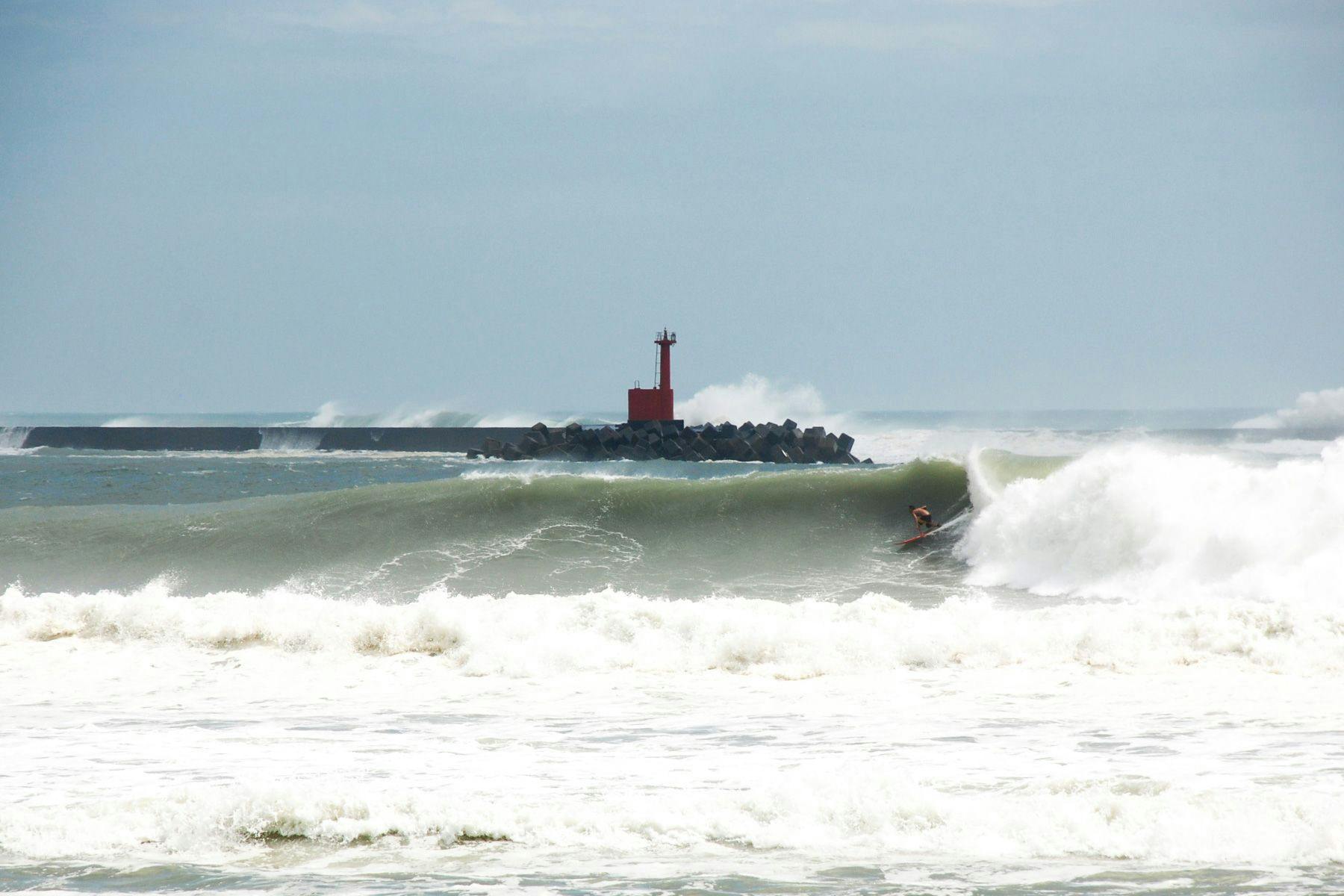
Although surfers have been travelling to Miyazaki for decades, it was not until 2015 that the first surf tourism economic analysis was conducted by the Miyazaki Prefecture Government. According to the 2015 report the economic benefit from incoming surfers to Miyazaki is estimated to be over 1.7 billion yen, roughly 15.5 million US dollars. Today surfing means big business and nearly every coastal community from Hokkaido to Kagoshima is tapping into this ‘surf town’ movement, including Miyazaki.”
“Not too different from Bali”
“Lots has changed over the past five to ten years. With the collapse of the honeymoon boom in the 1970s and capital being redirected to large scale resort projects like the Ocean Dome in the 1980s, Aoshima beach, where Surf City Miyazaki and much of the surf redevelopment is located, looked and felt like a post-apocalyptic tourist ghost town in the 1990s. Referred to as ‘ushinawareta nij?nen,’ meaning ‘twenty lost years’ (1991-2010), abandoned hotels and pachinko parlors, empty housing lots and rusted tourism infrastructure, co-existed alongside the local surf shops.
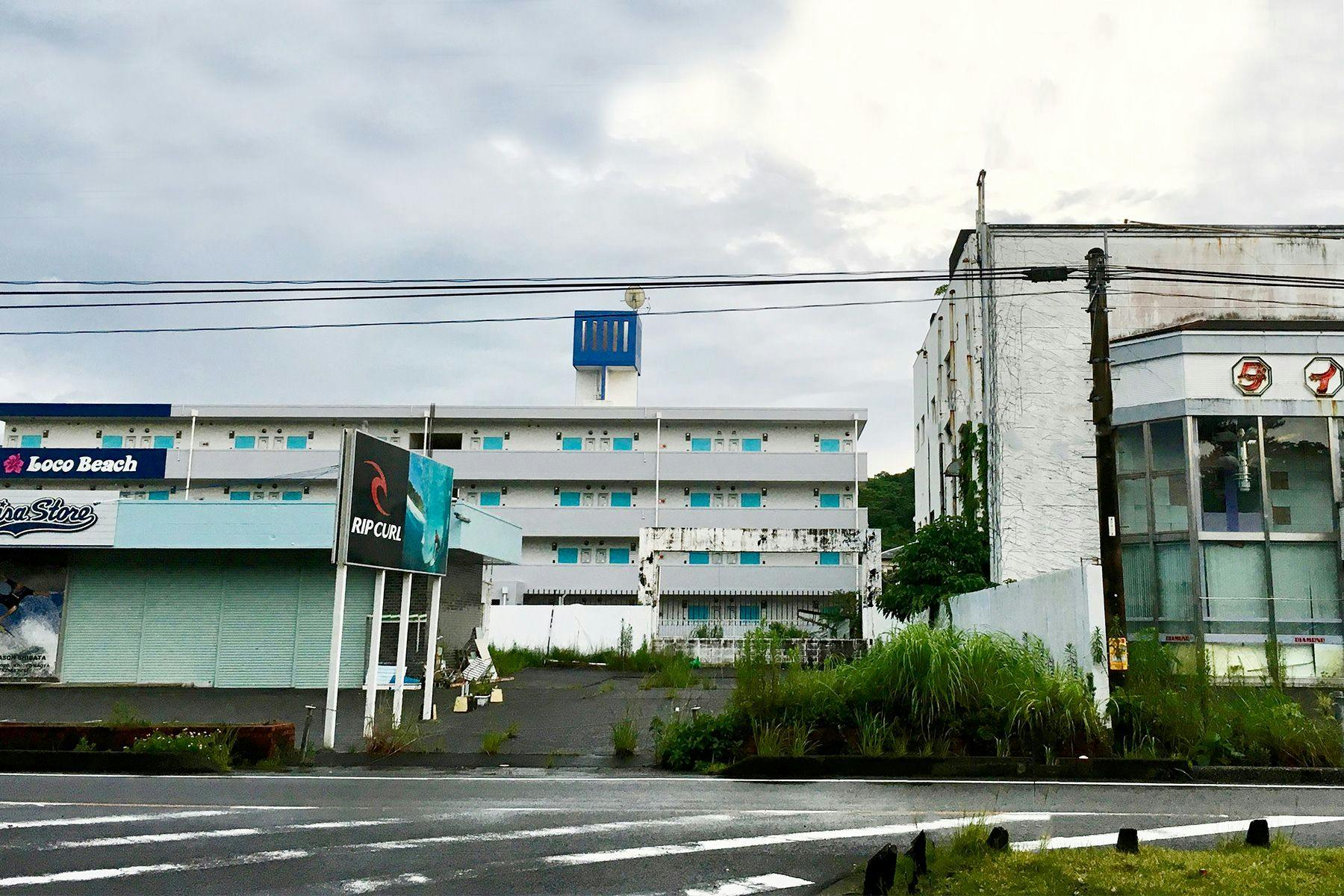
The Aoshima beachside was in desperate need of an upgrade, and surf tourism would be a key tool in the redevelopment project. The Aoshima Tachibana Hotel was finally demolished in 2010 and Aoshima beach started to reinvent itself. New surf tourism focused backpacker accommodations began to open up and the larger projects like the Nagisa-no-Koban, which is a beach patrol center that opened in 2009 with the aim of bringing together various seaside activities and to create an ocean environment that is accessible and enjoyable for everyone. This marked the beginning of other Aoshima beachside developments like Aoshima Beach Park that opened in 2015 – which offers beachgoers a place to buy food, drink, play music and hang out – and Surf City Miyazaki that opened a year later with the aim of offering surf lessons, yoga and other outdoor fitness activities for locals and visitors alike. Everyone is tapping into the surf town development momentum. The latest proposal has been to make an Aoshima Beach Village complete with a hotel, spa, a shared office space targeted to IT workers, and a pool; a Silicon Valley in Miyazaki. The main idea being that users of the office space, who will come from all over Japan, can surf in the morning and go to the office which will be ‘0 seconds from the ocean’.
The most noticeable effect these new businesses have had is that the once post-apocalyptic beach scene has been renewed through a global surfing imaginary. For instance the Aoshima Beach Park signage is entirely written in English, the food stalls include American style hamburgers restaurants and a pizzeria, and the inspiration for the design is said to have taken its design from the strong beach cultures of California, Australia and Hawaii. These changes mark a significant change in the beach aesthetic based on a globalized surf space imagery. As one visitor described it to me, ‘It looks like any surf tourist spot. It might as well be Bali.’”
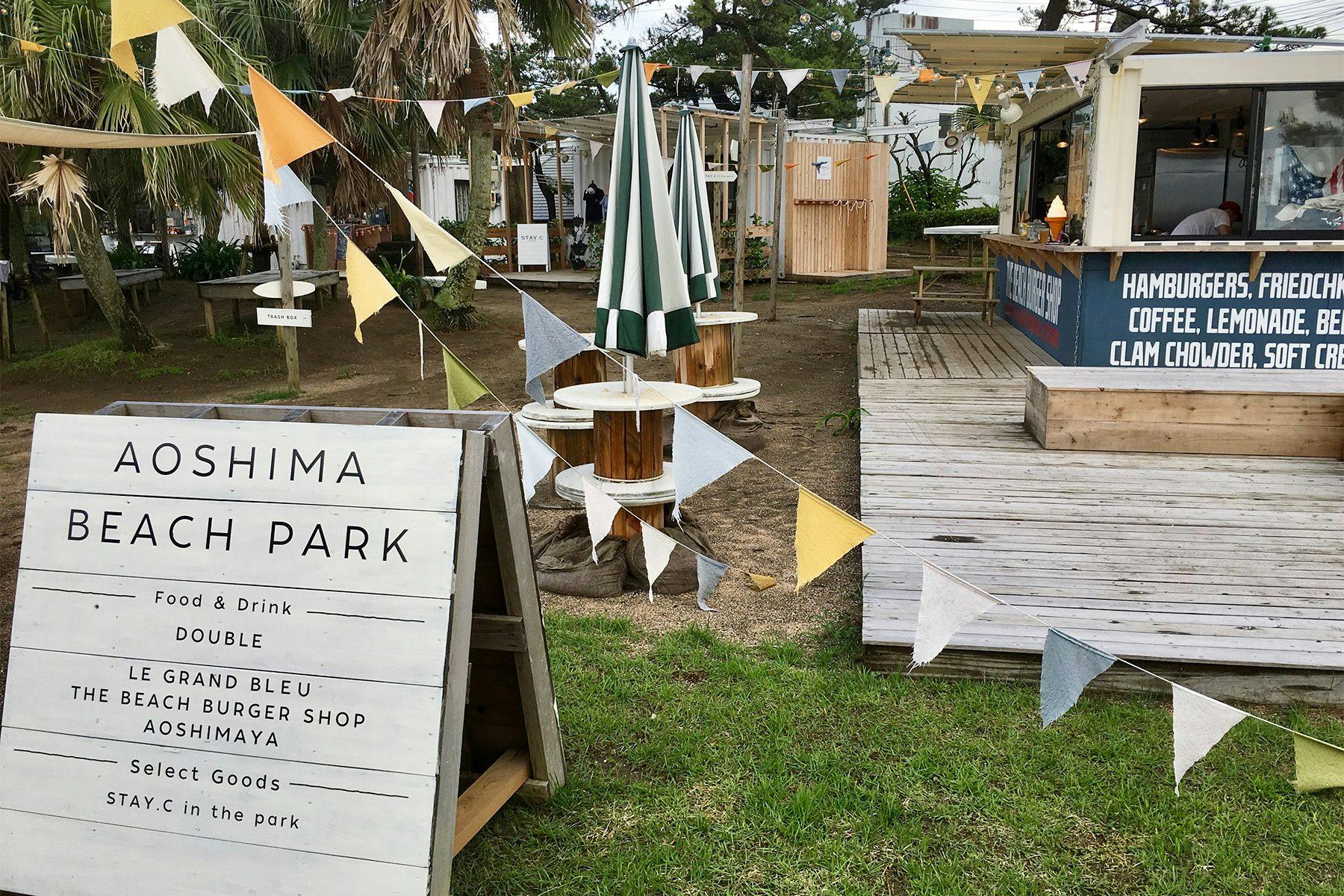
A Kaleidoscope of Pros and Cons
“I can in no way speak for the local Miyazaki surfing community regarding how they experience surfing and the meanings they ascribe to surfing, my work in Miyazaki focuses on the historical links between surf culture and tourism development. Surf tourism and rural revitalisation has for the most part been a welcomed change. It is really gaining momentum with the number of international visitors to the area showing significant increases in recent years. This has led to an increase is surfer backpackers, beach bars, lifestyle migrants to the area and surf schools, a familiar scene in the global surf circuit. Domestically, the independent female travellers/surfers between the ages of 25-40 have become the most sought after market in Japan. The most impactful new business in the area, the outdoor fitness center called Surf City Miyazaki, has been recognised nationally as an innovative business model, with roughly 90% of new cliental being young women. Here brands like Roxy/Quicksilver and Red Bull are highly visible especially during events like the annual Butterfly Effect.
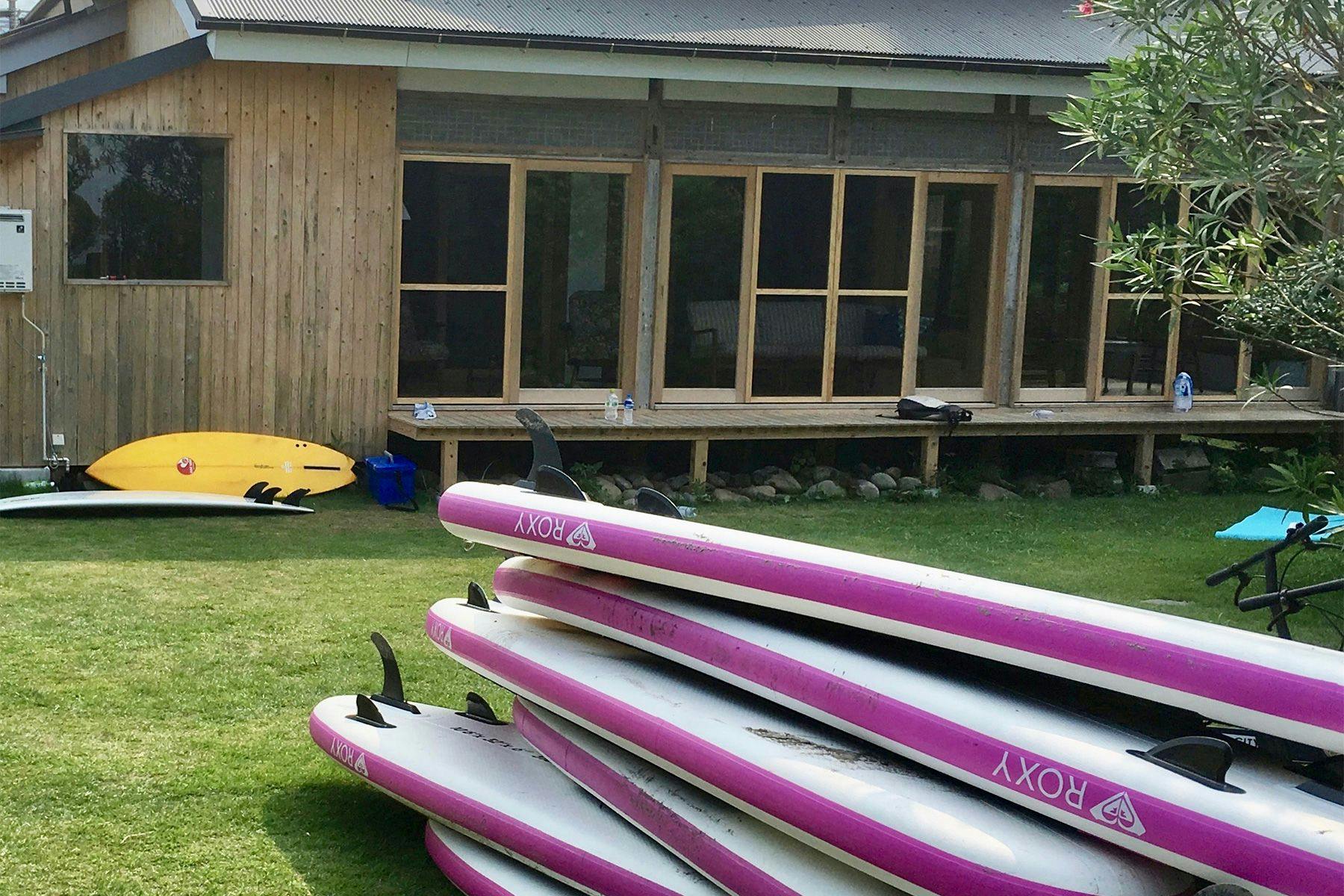
The feminisation of surf capital has therefore played an important role in revitalising the local economy and has created a greater sense of belonging amongst women and in the surf. However, Japan still ranks 123rd out of 144 in terms of political empowerment for women according to the 2017 World Economic Forum report. Is a neoliberal logic of developing a female surf/travel market truly empowering women in Japanese society? How is this approach able to address the serious structures of power that still prevent women from being decision-makers in Japanese society? Is this movement a political force in Japan or niche marketplace distraction?
In a similar way the overall strategy of surf tourism development may also reinforce conventional rural-urban divides rather than offering any long-term solutions to the issues facing rural Japan today. The stated strategy for this mode of economic development has been referred to as ‘yosomono, wakamono, bakamono,’ meaning ‘young, crazy, outsiders’. The strategy aims to attract young urbanites from rural areas like Tokyo and Osaka in the hopes that they have the style, skills and funds required to reinvigorate the Japanese countryside. The introduction of a ‘new’ beach culture to Miyazaki is relying on the investments and cultural knowhow of urban lifestyle migrants who have the promotional skills, desire and finances to “produce” a new destination. One of the key slogans of this new development being, ‘Change is good’.”

Of course change is as disruptive as it is a positive experience and not everyone perceives the change as all good. Some people interviewed for my research noted how Aoshima area in particular is becoming more like the famous home of surf fashion and culture, Shonan near Tokyo. Additionally, everything has become highly-stylized, turned into an ‘event’, and the ocean is now informally managed through time-slots and class schedules. One hula group I talked to no longer dances in Aoshima because of the increasing formalities that come with economic development. Although this economic redevelopment has largely been welcomed there are a few people who have told me of how the once close surf community has not just been divided, ‘it’s been blown to pieces and will not likely be repaired.’ This is the old guard trying to come to grips with this shifting global landscape, but this tension is also part of the new surf scene in Miyazaki.”
The Localism Conundrum: Traditional vs Modern
“Traditionally, like many part of the world, Japan’s surf scene has been managed, governed and controlled by the first-generation surfers. Surf bosses, hierarchy, territories, patriarchy and respect define Japanese surf spots. In a recent interview with Stab Magazine, Tom Carroll explains his recent experience in Japan saying that the surf culture feels like ancient Japan, governed by respected leaders who rule many regions across the country. But the new surf tourism developments have opened-up this once solid “traditional” style of surf governance. Miyazaki’s surf scene has diversified and multiplied, making this traditional form of governance increasingly difficult for the old guard. The emerging surf scene is globally networked, transnational, and diverse, which has created a more accessible space for more people to try out surfing and hang out on the beach. More kids surfing than ever before, and there is a notable increase of female surfers in the area. This diversity is much more noticeable in Miyazaki than say other surf spots throughout Japan as there is simply more space and less people to contend with.
The internationalization and opening up of the beach and surf culture in Miyazaki has created new possibilities, but also tensions in how surf breaks are managed, governed and experienced. As one surf boss described to me, he has grandchildren surfing now and he knows he should try to follow international surf etiquette, but is finding it hard. He would rather own the peak than negotiate his position with others. But owning the peak is becoming increasingly difficult in a time where there are more international surfers coming to Miyazaki, more lifestyle immigrants surfing and opening new businesses, more kids surfing and more women. New developments have diversified Miyazaki’s surf scene calling into question the ‘traditional’ governance model of the surf breaks in Miyazaki and Japan more broadly.”
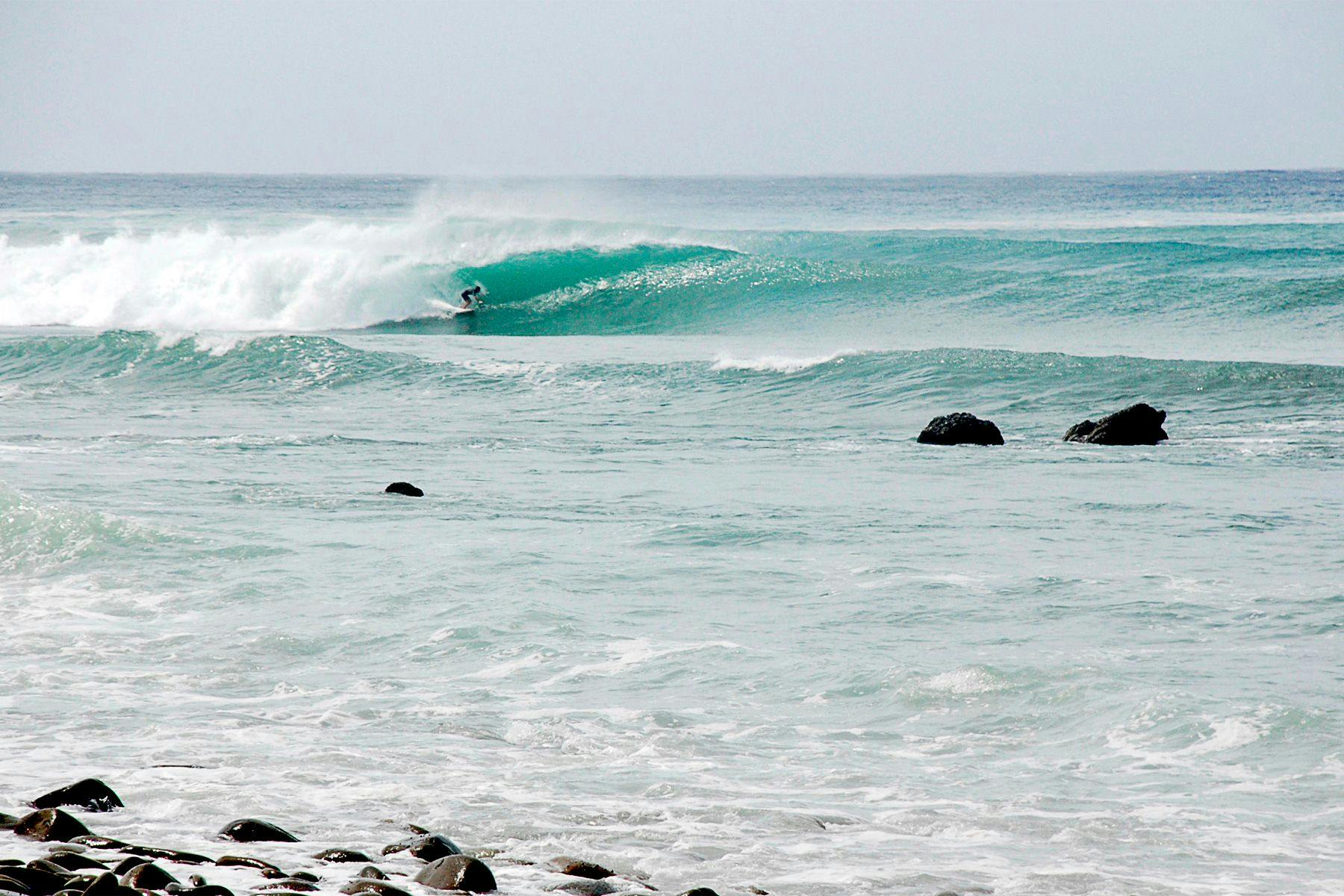
For the Sake of the Olympics – and a Prosperous Future for Everyone
“Everyone is working hard to revitalize the rural economy in Miyazaki. City officials, young entrepreneurs, local surfers and lifestyle immigrants all desire to make life in Miyazaki more sustainable in the long-term. Miyazaki is not alone in this struggle. All rural areas in Japan are facing similar issues of depopulation, an aging society and lack of job opportunities. The neoliberal free-market approach of attracting “young, crazy, outsiders” to rural areas is working to some extent. Aoshima’s beachside is no longer a ghost town and is showing new signs of life after a twenty-year hiatus. But as a long-term national strategy, this free-market approach may not be enough. Tourism is seen by the national and prefectural governments as a panacea for Japan’s social issues. This strategy relies heavily on inbound international tourism, which is closely linked with the Tokyo 2020 Olympic Games. The hope being to attract 40 million tourists by 2020 and 60 million by 2030.
Miyazaki has a long history of being a tourism destination and has always been the first to take advantage of new tourism trends and policy developments. In this way, the prefecture has shown a great ability to reinvent itself during changing times. Today, surfing and surf culture is playing an important role reproducing the image of Miyazaki as a southern tropical paradise in the hopes of attracting tourists. And yet the prefecture has consistently remained one of the poorest in the nation. Tourism has not proven to be an effective long-term solution to the issues facing rural Japan. Tokyo-centrism still dominates the politics of Japan; peripheral rural areas are left to compete amongst one another for international tourists. So, while there is a common theme that the Tokyo 2020 Olympics has the potential to offer opportunities for marginalized rural communities like Miyazaki to gain greater visibility and more international inbound tourism, the broader structures of power remain the same: Tokyo first and rural communities like Miyazaki an afterthought. The real structural change required to shift the broader political and economic landscape of Japan will require more than trickle down tourism investment. Surf tourism and surf imagery has undoubtedly helped Miyazaki to reimagine itself in difficult economic times, but it could be argued that this free-market style of surf tourism development reinforces rather than remedies the longstanding rural-urban disparities.
Large questions hover over the Olympics: What happens when the Olympic Games are over? Will investment in international tourism continue? Will the wave of surf town development in Japan come crashing down during the post-Olympic hangover? Miyazaki’s open access, consistent waves and low number of surfers there will ensure a steady stream of domestic surf tourists will always go there. Miyazaki is frequently referred to in Japan as the island within an island. This inaccessibility and relative obscurity has made it a truly a special place in the Japanese surf scene. Cheap flights, the Olympic Games, increasing tourism promotion, and new transnational networks are slowly building new bridges to this once off the beaten track surf paradise. The attention now is primarily on economic development in dire economic times. Only time will tell whether or not surf tourism development is an economically and environmentally sustainable strategy in the long-term, but if history has taught us anything it is that despite the hype rural communities like Miyazaki will not be the primary beneficiaries of the Tokyo 2020 Olympics Games. Some money may trickle down but the privileging of the urban spaces is obvious, and as a result rural Japan will continue to struggle with issues of rural depopulation, ageing communities and lack of jobs. But another thing is also certain, as long as the waves keep coming surfers will continue to find ways to stay in this unique version of Northeast Asia’s surfer’s paradise.”
Surf Simply would like to thank Associate Professor Adam Doering of Wakayama University for his time and assistance in producing this article. You can view Adam’s work here.